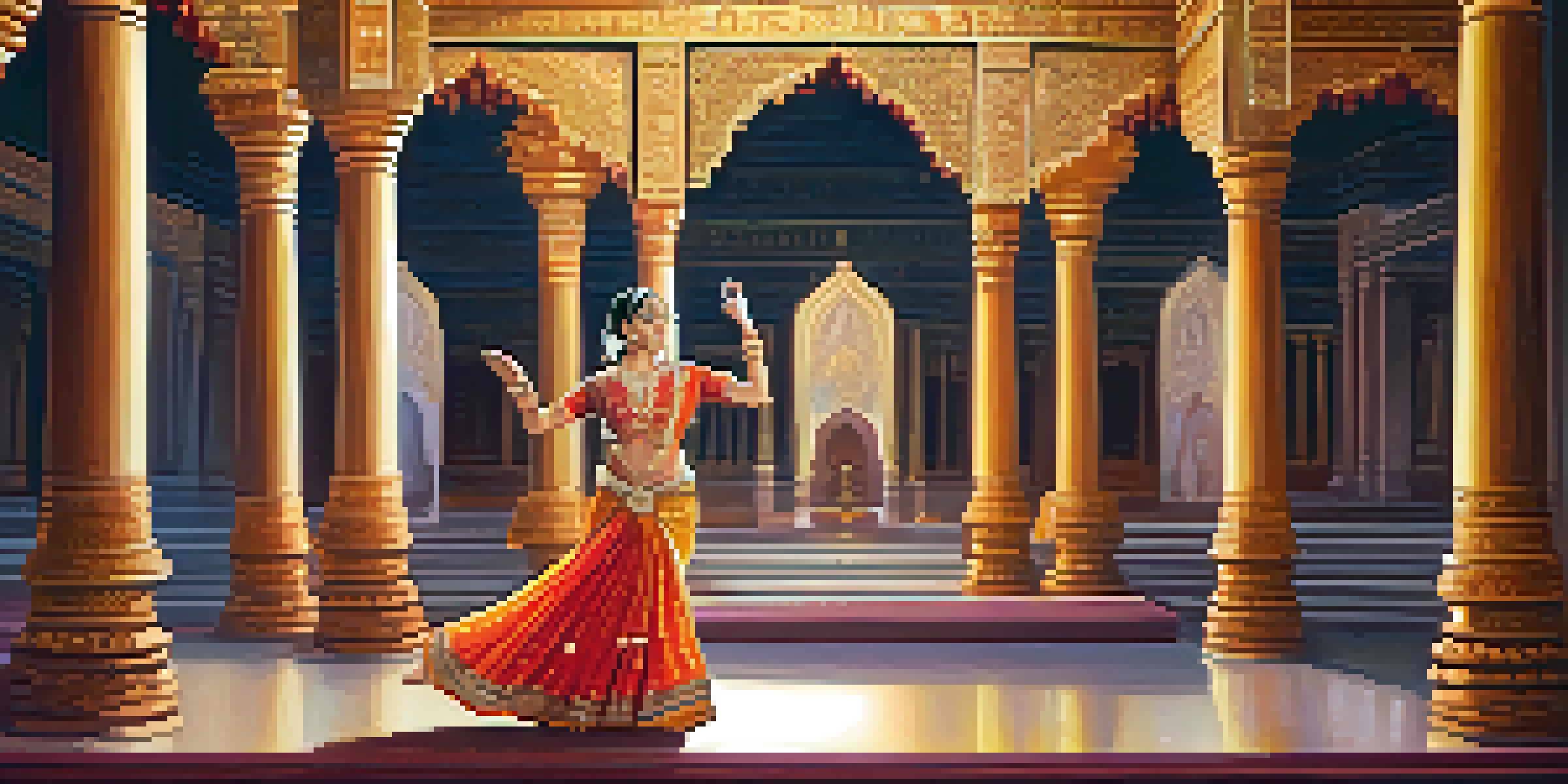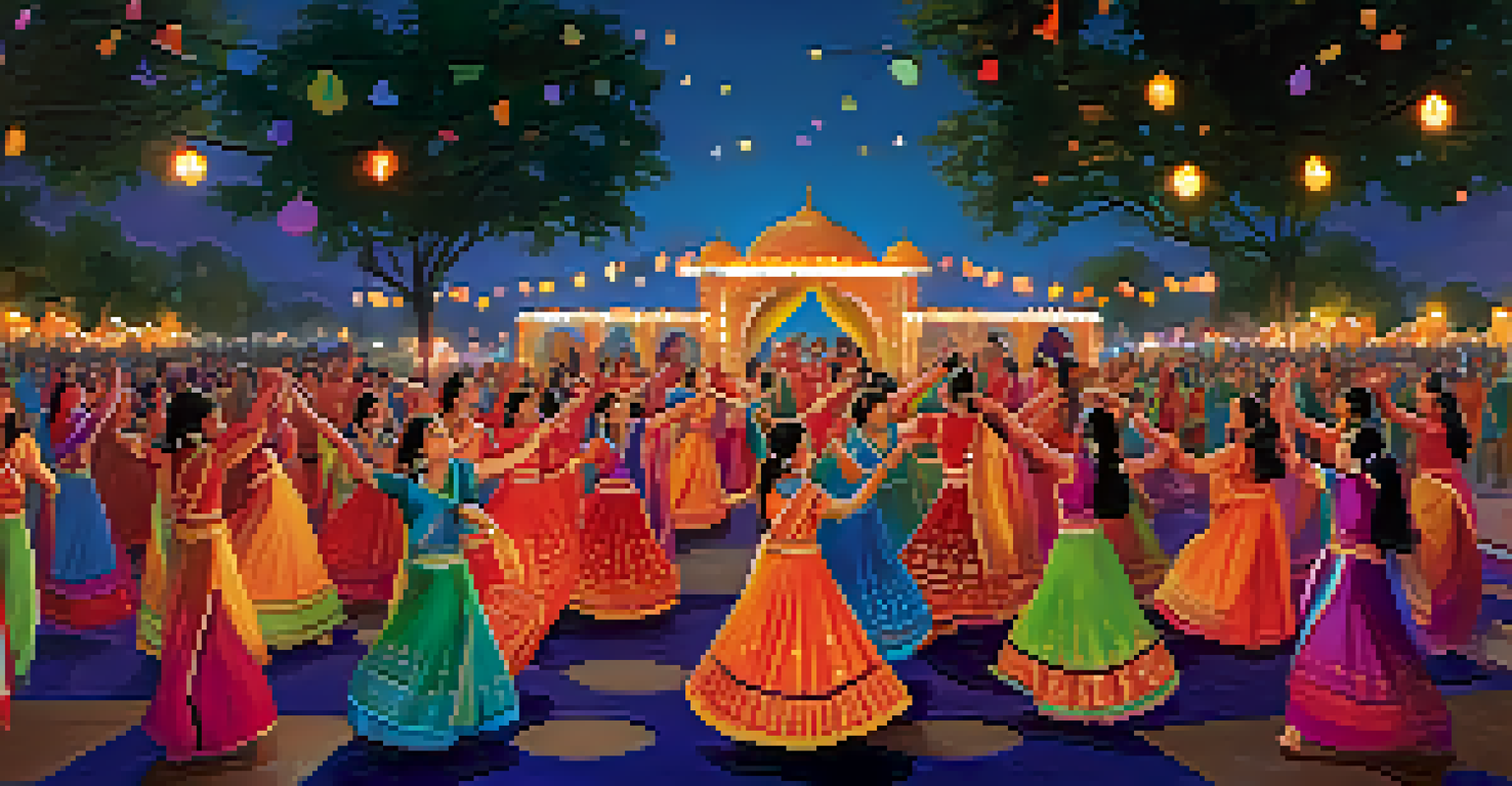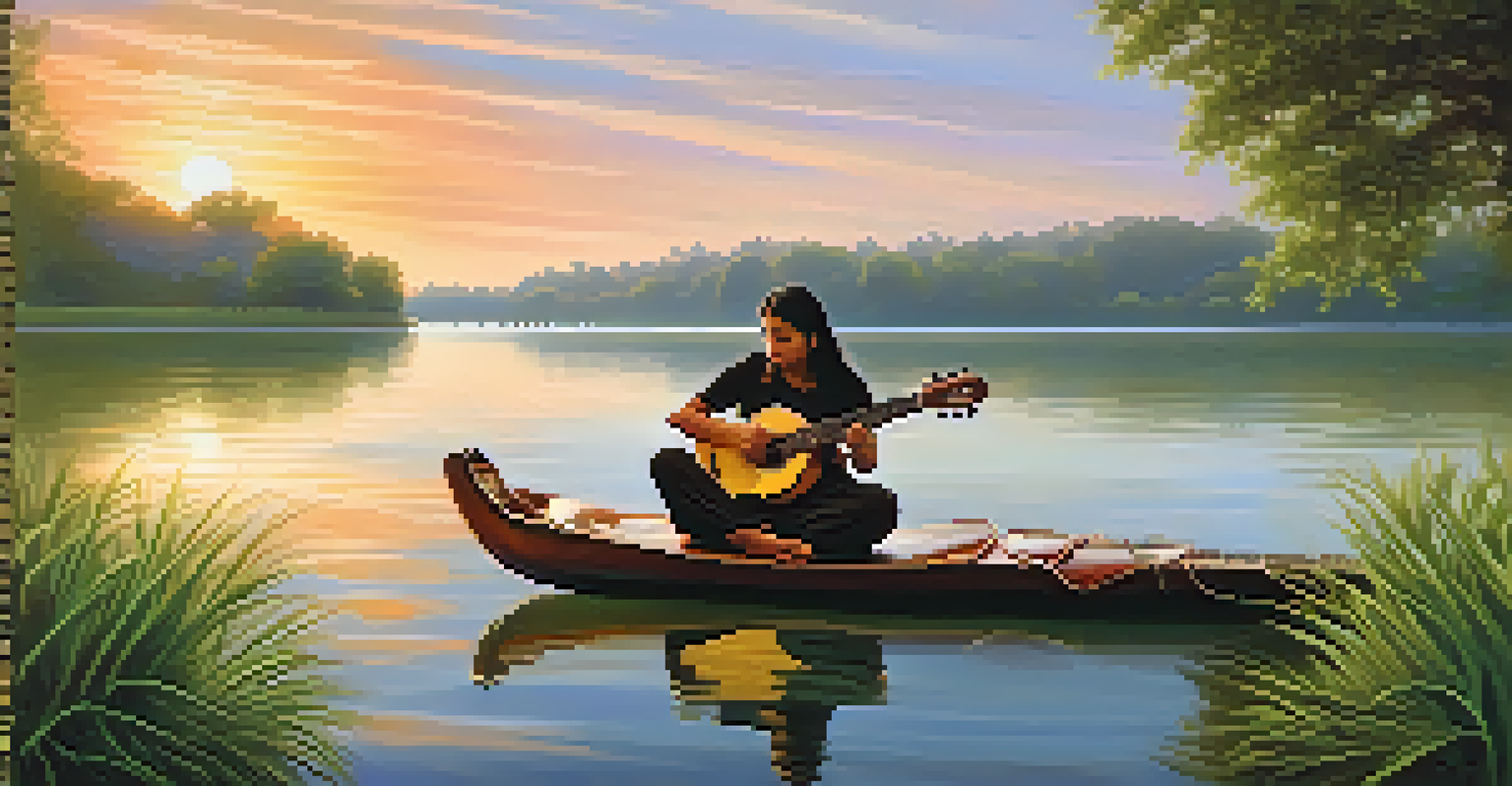Exploring the Spiritual Side of Music and Dance in India

The Historical Roots of Indian Music and Dance
Indian music and dance have rich historical roots that date back thousands of years, intertwined with spirituality. Ancient texts, such as the Natya Shastra, outline the significance of these art forms in religious practices and rituals. They were initially used to convey stories of deities, making every performance a spiritual experience in itself.
Music is the shorthand of emotion.
As time progressed, these performances evolved, yet they retained their sacred essence. Temples often served as venues for dance and music, where devotees could connect with the divine through art. This intertwining of spirituality and performance has created a unique cultural tapestry that continues to thrive today.
The historical context not only enriches our understanding of these art forms but also highlights the importance of preserving this heritage. By exploring their origins, we can appreciate how music and dance serve as conduits for spiritual expression and connection.
The Role of Ragas in Spiritual Experience
In Indian classical music, ragas hold a pivotal role, acting as frameworks for improvisation and emotional expression. Each raga is associated with specific times of day or seasons, believed to evoke particular moods and feelings. This deep connection between ragas and spirituality helps practitioners create an atmosphere conducive to meditation and reflection.

For instance, the Raga Yaman, typically played at night, is said to evoke feelings of devotion and tranquility. Musicians often play it during spiritual gatherings, allowing listeners to experience a profound sense of peace. This practice exemplifies how ragas serve not just as musical structures but as pathways to spiritual awakening.
Spiritual Roots of Indian Art
Indian music and dance are deeply intertwined with spirituality, originating from ancient rituals and texts that emphasize their significance in connecting with the divine.
Understanding ragas enhances our appreciation of their spiritual significance. By immersing ourselves in the sounds and emotions they evoke, we can tap into a deeper level of consciousness, making music a truly transformative experience.
Dance as a Spiritual Practice in Indian Culture
Dance in India is not merely a performance art; it is a spiritual practice that fosters a connection between the dancer and the divine. Classical dance forms like Bharatanatyam and Odissi often depict stories from Hindu mythology, using intricate gestures and expressions to convey spiritual themes. Each movement is intentional, aiming to communicate a deeper message.
Dance is the hidden language of the soul.
The act of dancing can be meditative, allowing performers to transcend their physical selves and enter a state of bliss. This transcendence is akin to the feeling of being 'in the zone' that athletes describe, but here, it is deeply rooted in spirituality. By embodying divine characters, dancers become vessels of spiritual energy, sharing that connection with their audience.
Thus, dance becomes a form of worship—a sacred dialogue between the performer and the divine. Through this vibrant expression, practitioners invite viewers to join them on a spiritual journey, fostering a sense of unity and shared experience.
The Connection Between Music, Dance, and Meditation
Music and dance are often used as tools for meditation in Indian culture, helping practitioners to quiet the mind and connect with their inner selves. The rhythmic patterns of music and the fluidity of dance movements can induce a meditative state, allowing individuals to transcend everyday distractions. This connection highlights the holistic nature of spirituality in Indian traditions.
For many, participating in music or dance during meditation enhances the experience, providing a sensory anchor that deepens focus. The combination of sound, movement, and intention creates a multi-dimensional practice that nurtures both the spirit and body. This is why many yogic practices incorporate music and dance elements, allowing for a full spectrum of spiritual engagement.
Ragas Enhance Spiritual Experience
Ragas in Indian classical music serve as emotional frameworks that facilitate meditation and reflection, fostering a deeper spiritual connection.
Embracing music and dance in meditation invites a deeper exploration of self and spirituality. By integrating these art forms into personal practices, individuals can foster a more profound connection to their inner being and the universe.
Festivals: A Celebration of Music and Dance
Indian festivals are vibrant celebrations that often feature music and dance as central elements. Events like Diwali, Dussehra, and Navratri showcase traditional performances, bringing communities together in joyous celebration. These gatherings create a spiritual atmosphere where art becomes a medium for worship and connection.
During these festivals, music and dance are not just entertainment; they are expressions of devotion and gratitude. Participants engage in group dances like Garba and Dandiya, fostering a sense of unity and shared spiritual joy. The infectious energy of these celebrations often leaves participants feeling uplifted and spiritually enriched.
By participating in these artistic expressions during festivals, individuals can experience the collective spiritual energy of the community. It serves as a reminder of how music and dance can be powerful tools for connection, bringing people together in the name of celebration and spirituality.
The Healing Power of Music and Dance
Beyond their spiritual dimensions, music and dance in India are recognized for their healing properties. Many believe that these art forms can heal emotional and physical ailments through their rhythmic and melodic qualities. This belief has led to practices like music therapy, which harnesses the power of sound to promote well-being.
In traditional Indian healing systems, such as Ayurveda, music is often used to balance energies within the body. Similarly, dance is seen as a form of physical therapy that promotes health and vitality. By engaging with these art forms, individuals can find solace, healing, and a deeper connection to their spiritual selves.
Festivals Unite Through Art
Indian festivals celebrate music and dance as expressions of devotion and community, creating a shared spiritual experience among participants.
This aspect of music and dance highlights their multifaceted nature. They are not just forms of entertainment but also tools for healing and personal growth, enriching lives at both the physical and spiritual levels.
Modern Interpretations of Traditional Music and Dance
In recent years, there has been a resurgence of interest in traditional Indian music and dance, with modern interpretations weaving in contemporary elements. Artists are blending classical styles with various genres, creating innovative performances that resonate with younger audiences. This fusion allows for a fresh perspective while honoring traditional roots.
For instance, contemporary dance troupes might incorporate hip-hop or jazz elements into classical styles, making the performances more relatable and engaging. These adaptations not only keep the art forms alive but also invite new audiences to explore their spiritual significance. The evolution of these art forms demonstrates their adaptability and relevance in today’s society.

By embracing modern interpretations, the spiritual essence of Indian music and dance continues to thrive. This evolution ensures that future generations can connect with these profound traditions, discovering their own spiritual paths through art.